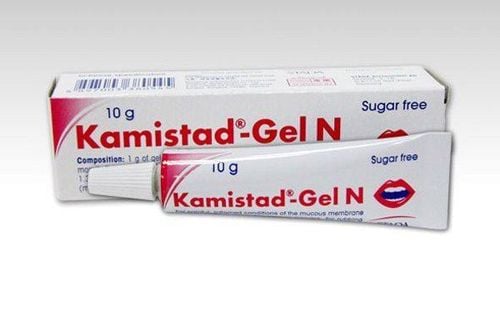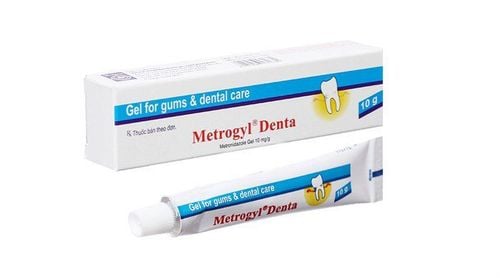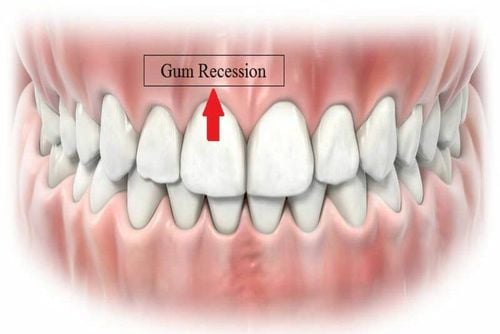This is an automatically translated article.
The article is professionally consulted by Doctor of Dentistry - Jaw - Face - Department of Examination & Internal Medicine - Vinmec Hai Phong International General HospitalPeriodontitis, also known as periodontal disease, is one of the most common oral diseases in both young and old people. The signs of periodontitis are easy to recognize that are bleeding gums, bleeding in the gums, swollen gums,....
1. What is periodontitis?
Periodontitis, also known as periodontal disease, is a condition in which the tissues surrounding the teeth become inflamed. Periodontitis is divided into two main groups, namely gingivitis and periodontitis.Gingivitis : Gingivitis often appears during puberty. Periodontitis: Juvenile gingivitis, if left untreated, can lead to periodontitis in adolescents and adults. Poor oral hygiene creates conditions for bacteria to grow and attach to the teeth, causing gingivitis. This is considered the main cause of periodontitis. In addition, some of the following factors increase the risk of disease such as:
Not paying attention to oral care. Unreasonable, scientific nutrition. Decreased resistance due to disease (HIV/AIDS) or pregnancy. Regularly smoke. Having a number of diseases such as diabetes, an infection in the body, ...

Thường xuyên hút thuốc lá là yếu tố sau làm tăng nguy cơ gây bệnh viêm nha chu
2. Stages of periodontitis
Periodontitis is often overlooked due to its silent progression. The disease progresses through 4 stages:Stage 1: Tartar and tartar are formed due to poor oral hygiene, creating conditions for bacteria to accumulate in interdental plaques, tooth necks, gum edges and teeth. cause gum irritation, leading to gingivitis. Stage 2: Gingivitis causes swelling and bleeding in the gums, especially when chewing food or brushing teeth. Stage 3: Gingivitis if not treated will lead to periodontitis. These are pus-filled colonies of bacteria in the gums. Stage 4: Periodontitis destroys the bone of the tooth socket, causing the gums to recede. When the organization around the teeth is no longer strong, the teeth will become loose and may lead to tooth loss. Periodontal disease can appear very early in both men and women. When the gums are inflamed, the gums swell and then collapse. If you ignore this sign because you think the disease has been cured, it will make the disease worse. Therefore, it is necessary to recognize the early signs of the disease to promptly visit the dentist and get treatment.
3. Signs of periodontitis
The signs of periodontitis are easy to recognize:Tartar, tartar forming in the neck of the tooth. Swollen gums, gums. Bleeding in the gums, especially when brushing or chewing food. Pressing on the gum area, swollen gums can see pus discharge. Halitosis . When chewing food, the teeth are not normal, the teeth are loose. Sparse teeth due to displacement.
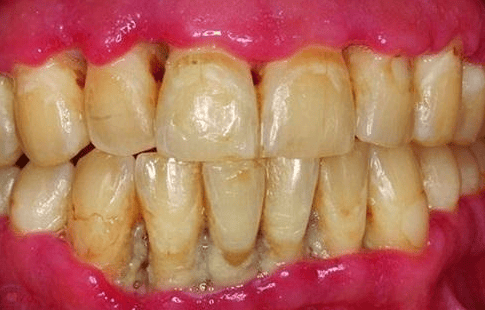
Hình ảnh viêm nha chu
4. What to do when detecting periodontitis?
As soon as the above signs of periodontitis are detected, the patient should see a dentist soon for treatment advice. Depending on the extent and condition of the inflammation, your doctor will recommend an appropriate treatment method.4.1 Urgent treatment of periodontitis Urgent treatment of periodontitis when an abscess occurs in the affected gingival area or the mucosa is inflamed. Touching the abscess is painful (may be more or less), the mucosa is red and swollen.
Treatment is usually antibiotics and anti-inflammatory drugs, but this is only a temporary method, the disease can progress to chronic and acute relapse cycles.
4.2 Treatment of periodontitis without surgery Depending on the status of periodontitis, the doctor will handle as follows:
Apply anti-inflammatory and antiseptic drugs to the gums, inflamed and swollen gums. Get tartar, tartar. Inspect fillings, modify or replace fillings. Restoration of teeth that have been filled with incorrect technique or temporarily. Fixed loose teeth. Extraction of teeth for teeth that cannot be kept. 4.3 Surgical treatment of periodontal disease Surgical treatment of periodontal disease is performed only in cases where other measures have not been effective, including the following techniques:
Periodontal pocket surgery: Doctor The dentist reduces the size of the periodontal pocket to facilitate cleaning of the plaque containing bacteria on the teeth. Reconstructive surgery: Periodontal pockets are formed by the destruction of periodontal tissue and bone. As these pockets become deeper due to the destruction of more periodontal tissue and bone, many teeth become loose. Periodontal bone and tissue can be regenerated after surgical removal of the periodontal pocket. Soft tissue graft surgery: Periodontitis causes the gums to recede and expose the tooth roots. At that time, soft tissue graft surgery is performed to limit the receding gums and restore the organization around the teeth. Soft tissue graft surgery can be performed on one or more teeth, which reduces sensitivity, and at the same time ensures aesthetics of the gum line. 4.4 Maintenance treatment of periodontitis Treatment of periodontal disease should be maintained when the disease is stable. Periodic examination, regular follow-up to promptly detect, prevent disease recurrence or progression.
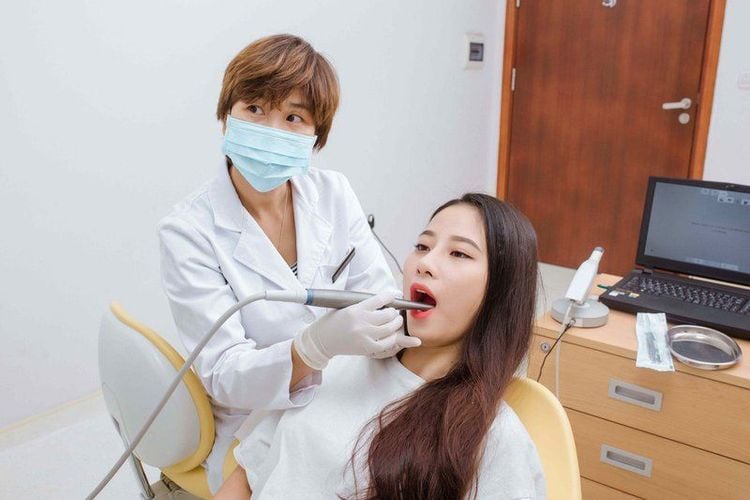
Điều trị duy trì bệnh viêm nha chu cần được thực hiện tại cơ sở y tế uy tín (ảnh Vinmec)
5. How to prevent periodontal disease?
Periodontitis can be prevented by proactively maintaining and taking care of oral health as follows:Brush teeth properly with a soft toothbrush and toothpaste, fluoride-containing mouthwash in the morning when you wake up. , the night before going to bed and especially after each meal to limit the accumulation of food on the teeth to form tartar. Use dental floss instead of toothpicks to remove food stuck between teeth. Periodic dental check-ups, take tartar every 6 months to limit tartar causing gingivitis leading to periodontitis. As soon as the signs of the disease are detected, it is necessary to go to the dentist soon for treatment, avoiding long-term leading to tooth loss or tooth extraction. Eat scientifically and reasonably, increase green vegetables and fruits to strengthen the body's resistance. Periodontal disease can be recognized early through signs such as swollen gums, bleeding gums, loose teeth, ... Therefore, when you notice signs of disease, you should go to medical facilities to visit. examination and treatment to avoid possible dangerous complications.
Vinmec International General Hospital is the address for examination, treatment and prevention of diseases, including the specialty of Odonto-Stomatology. When performing the examination process at Vinmec, customers will be welcomed and used modern facilities and equipment along with perfect medical services under the guidance and advice of experts. Good doctors, well-trained both at home and abroad.
Customers can directly go to Vinmec Health system nationwide to visit or contact the hotline for support.
Please dial HOTLINE for more information or register for an appointment HERE. Download MyVinmec app to make appointments faster and to manage your bookings easily.




